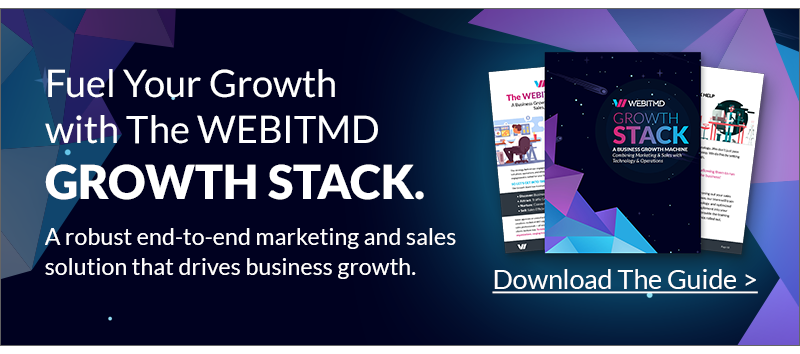The sales process is changing. The old school sales tactics of yore are not effective on the new generation of consumers. Today’s buyers are more educated than ever before, opting to conduct independent research before they even reach out to a salesperson. With this in mind, businesses need to empower their sales teams with the right tools, content, and strategies that will help them survive in modern times by becoming more efficient and trustworthy.
This is what we call a sales enablement strategy. It is a set of tools, tactics, and processes that enable sales teams to be more effective. More businesses are investing in sales training and upgrading their sales tools to provide a better customer experience and ultimately win more business. So if you want to maintain a competitive position in your market, you will need to create your own sales enablement strategy.
Here are a few tips to help you get started:
1. Identify the Challenges Your Sales Enablement Strategy Faces
There is no single sales enablement strategy that works for every business. Your business is unique, and you need to take some time to think about your current sales process, how it’s performing, and whether it aligns with your goals for the future. To identify the challenges your sales team encounters, ask the following questions.
- Is there anything creating friction in the current sales process?
- How’s your target buyer’s journey evolving?
- What knowledge do your prospects already have before they approach your sales team?
- Does your sales team have the skills and resources necessary for conducting strategic business conversations with the right people?
The answers to these questions will give you valuable insights that will help you know where to focus your attention.
2. Provide Training and Support That’s Immediately Applicable
Sales enablement is an ongoing process of improvement. Continuous but well-planned training can improve your sales team productivity in the short and long term. Training should be rolled out in phases to avoid overwhelming the team with too much information. Preferably, begin with the fundamentals, then improve their selling skills gradually. Starting small will help them see the immediate value of the training and increase their interest in it.
An effective sales enablement training program should cover the following areas:
- Streamlining the sales process
- How to talk to prospects
- How and where to access relevant content
- Software and technology trainings
3. Gather Sales Tools That Can Streamline Your Workflow
To save time and boost efficiency, look for tools that reduce long and tedious steps in your workflow. The tools should be simple to use and easy to integrate. A tool like HubSpot can help you organize and track your opportunities, leads, and contacts, and manage all essential sales details. There are automation tools that can minimize the amount of non-selling tasks that the sales team has to do, communication platforms to promote collaboration, and intelligent apps that can provide sellers with valuable information that can increase conversion.
Some examples of effective sales enablement tools can include:
- A centralized CRM
- Reporting dashboards
- Automation tools
- Video platforms
- And more
4. Align the Entire Organization With a Sales Focus
Contrary to what you might think, the job of selling does not fall solely on the sales team; your marketing team needs to take some accountability, as well. When sales and marketing departments work together, the business becomes better at closing deals.
Making an effort to align sales and marketing teams toward a common goal makes everyone’s job easier. Sales get’s better quality leads and marketing gets the insights they need to create better content that converts at a higher percentage. PLUS, the business ultimately wins because you are bringing in more revenue.
Of course, aligning sales and marketing is a process in and of itself, but the results will speak for themselves once you see what a well oiled machine your business has become.
5. Develop a Plan for Analysis
You can’t tell the strength or weaknesses of your strategy if you aren’t testing it. To make improvements, assess different aspects of your strategies. Look at which sales channels and team members are performing impressively, and what is contributing to their success, and how you can replicate that success elsewhere. Analyzing the performance of every action you take will inform you of what works and what changes need to be made, and where.
Stop Leaving Money On The Table
Since buyers are constantly evolving, your sales enablement strategy should, too. Regular workshops and consistent upgrades to your software and toolsets can help your team stay on the cutting edge, reduce friction and every step of your sales process, and unlock insights that create better informed business decisions.
If all of this sounds a little out of your comfort zone, don’t worry. Partnering with an experienced sales enablement agency can help you achieve the results you are hoping for. You can learn more about our own approach to sales enablement by downloading the free guide below or by contacting us through our website.
Editor’s Note: This article was originally published in August 2020 by WEBITMD. It has since been updated to reflect current best practices, services, and capabilities.






.jpg)



.jpg)





![5 Reports to Elevate Your HubSpot Sales Dashboard [+ Examples]](https://blog.webitmd.com/hs-fs/hubfs/Imported_Blog_Media/6-winning-examples-of-a-hubspot-sales-dashboard-2.png?width=767&name=6-winning-examples-of-a-hubspot-sales-dashboard-2.png)